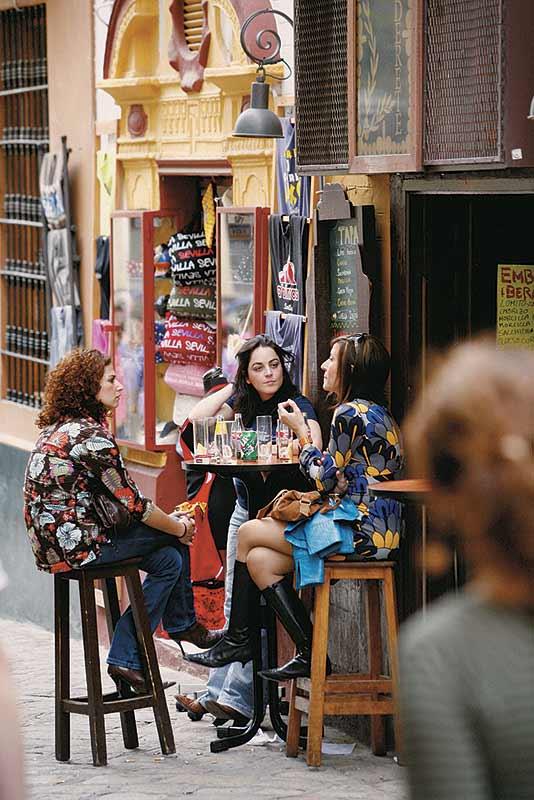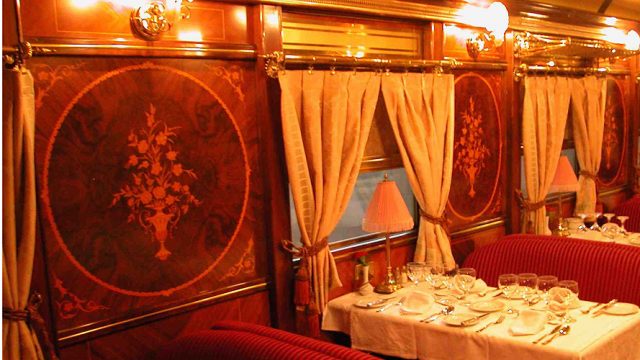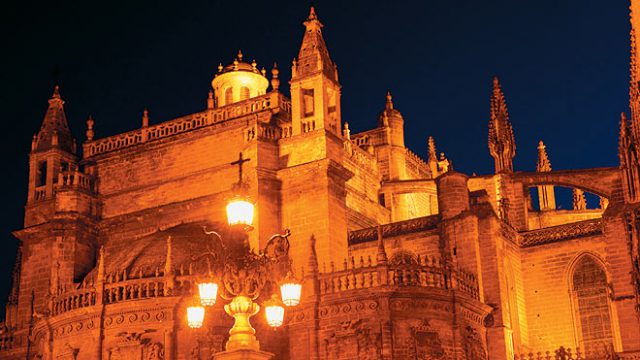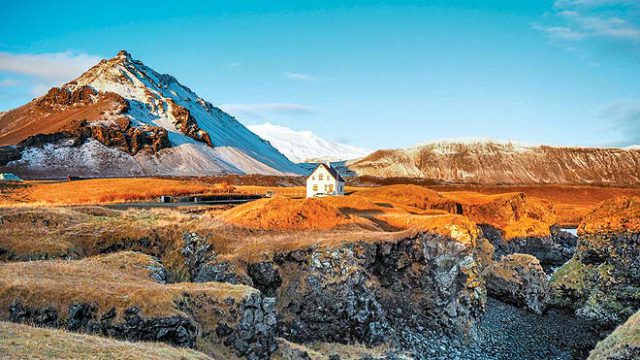Southern Spain’s Andalucía region conjures up heady images of toreadores and tapas, flamenco and bullfights, the operas
I flew directly into Seville, and in 10 painless minutes was in the city proper, courtesy a local friend with whom I was to stay. After a quick wash at the apartment, I was refreshed and ready to hit the town. A short walk through the maze-like streets landed me in the historic city centre, the Old Quarter. The remarkable commingling of three cultures — Arab, Catholic and Jewish — for over 500 years can still be seen and felt, perhaps nowhere more forcefully than here, at its heart, near the Puerta de Jerez, old city gate. This is the area of the magnificent Alcázar palace where I marvelled at the Mudéjar architecture, admired the media naranja (half-orange shaped) ceiling of the Salón de los Embajadores, and spent a happy couple of hours reading in the cool, expansive gardens. There was also the impressive Cathedral (the third-largest church in Europe, and the largest Gothic one anywhere) and Giralda tower, and the whitewashed labyrinthine Jewish barrio (neighbourhood) of Santa Cruz, where I punctuated my aimless wanderings by generous glasses of chilled, fruity sangría.
Seville is a thoroughly walkable city. I’d just worn out my good walking shoes, so snagged a new pair at one of the many shoe shops on the hopping pedestrian shopping district of Calles (cah-yes, streets) Tetuán and Sierpes, where bigger European brands are slowly, sadly edging out smaller competitors. I was crazy enough to be in Seville in early August, at the peak of its scorching 40-degrees-in-the-shade summer, but was rewarded for my insanity by rock-bottom prices on pretty much everything. There were no crowds to beat, either, since most sensible Sevillanos had escaped to cooler climes. Wasting no time to break in my new shoes, I wove through the connecting by-lanes, noting the many instances of this region’s characteristic Moorish glazed tiles, and chose a display of alchemical symbols in green-and-white tile as my personal favourite.
The Old Quarter’s narrow, crooked streets are a nightmare even for seasoned navigators — I spotted many a hopelessly-lost tourist wrapped in maps on every corner — so smart travellers allow themselves to get lost and see much more along the way. Luckily I was never far from bars, restaurants and shops, where I could always pop in for refreshments, directions and new friends. My local friend and guide had the good sense, however, to steer me towards the cosy, tree-shaded Plaza Alfalfa, home to a popular weekly pet market on Sunday mornings (PETA might frown), and several excellent watering holes on all evenings.
In particular he pointed me to the Bar Alfalfa, which quickly became my favourite in the whole city, where Ramón ‘El Gitano’, Asime (a Turkish engineer and dancer), Zia (heartbreakingly handsome, flirtatious, also Turkish), shy Nestor and gang welcomed me like long-lost family. The Alfalfa somehow manages to squeeze its customers, staff, equipment, storage and toilets into one tiny little space, and still feels cosy, never crowded. Lined to the ceiling with hefty olive amphorae and bottle upon bottle of wine, great for breakfast with strong coffee, fresh-squeezed orange juice and a book in the mornings and buzzing with laughter and hearty greetings in the evenings, it’s Cheers without the cheesiness or bad jokes. The blackboard lists the day’s tapas. I recommend: spinach and garbanzo bean; grilled eggplant; house-made hummous; thinly-sliced jamón or salt-cured ham. The music ranges from opera and traditional flamenco (if Ramón’s in the mood he’ll happily sing along) to Spanish rock, reggae, punk and dub.
A word here on coffee: almost every place with a shred of dignity in Seville — indeed, in Spain — serves quality coffee. Espresso machines are the norm; be prepared to be sneered at if you ask for instant Nescafé. Choose between café solo or doble (single or double espresso), cortado (a shot of espresso cut with a dash of milk), con leche (espresso with an equal amount of milk), americano (espresso diluted with hot water), cappuccino (only ordered by tourists in posh bars; don’t bother), con hielo (espresso with a side glass filled with ice), carajillo (ca-ra-hee-yo; espresso with a shot of liquor: whisky, rum, brandy or anisette, perfect after a heavy all-nighter) and trifásico (the poetic ‘tri-phasic’; a carajillo with a bit of milk).
Most bars offer decent, chilled beer on tap (often served in iced half-pint glasses) and a good house wine (generally a Rioja). At all the places I visited, I paid around 1-1.50 euros for beer and coffee, and 2-2.50 euros for house wine. If listed prices are significantly more, move to another establishment — you’ll get a better bang for your buck and have a better time.
The heat left me too winded to huff my way up the 34-storey ramp to the top of the Giralda tower for a city view during the day, so I waited for nightfall and took the elevator to the rooftop bar of the Hotel Doña María, ordered a drink and enjoyed an awe-inspiring view of the Giralda bathed in floodlights obscured periodically by clouds of bats.
After I had spent a day or so trotting through the standard sights in the Centro and Santa Cruz areas, I walked to the end of Calle Sierpes and crossed north onto Calle Amor de Dios (noting the immediate, marked change in ambience), heading towards the less glitzy La Macarena neighbourhood to explore the seedy but charismatic underbelly of the city. I passed earthy stores cluttered with batik-print fabrics, with plenty of grunge, graffiti and grime along the way, and shops selling, erm, ‘personal massagers’ on several side streets.
Eventually I emerged on Calle La Feria, where a weekly flea market on Thursday mornings sees shady characters hawk household odds and ends, stolen goods and kitsch. I didn’t expect any great finds, though, and chose instead to just soak in the atmosphere and have an animated conversation with a retired nuclear physicist named Leo, who was sitting in the sun drinking beer and half-heartedly selling used books and old film posters. The run-down, airy Café-Bar Norte Sur nearby offered me respite from the heat; its regular patrons were cantankerous, deformed geriatrics happy to fill me in on local gossip with charming disregard for the fact that I was not from the area. Spain as a whole loves to smoke; while there are smoking bans in place for certain public areas and establishments, most restaurants can choose whether to allow smoking, and most do. A sign for “considerate smoking” caught my eye, which translated: “Smoking is allowed in this establishment; do it with moderation, think of those who don’t smoke and share this space together for a good community. Thank you.”
A better shopping bet than the Feria market is the larger Sunday flea market at the nearby Alameda de Hércules plaza, filled with hippies and gypsies touting colourful wares, many of which bear ‘Made in India’ tags. I preferred the Alameda in the cooler evening, when the restaurants lining the plaza set up outdoor tables and relatively harmless beggars and prostitutes start their own flea (-ridden) market. El Badaluque, at the corner of Calle Calatrava, does satisfying salads and pizzas if you ever get tapa’d out.
Seville’s essence is best imbibed through an evening paseo (stroll). I began mine by crossing the Guadalquivir river via the iconic Puente de Triana (Triana Bridge) over to the tile-happy Triana district, pausing to admire the cantilevered Alamillo bridge to my right, strung like a giant harp across the water. I gunned straight into the inner lanes to local hotspot Las Golondrinas to savour excellent, authentic tapas, best had standing up at the bar. The vegetarian tapas here are particularly outstanding: don’t miss the parsley-and-olive-oil-pickled carrots, grilled peppers, divine radishes and stuffed mushrooms, washed down nicely with cold beer. Once sufficiently steeled against the crowds, I wound my way back to the more touristy waterfront Calle Betis, where the string of boisterous bars spill out onto the sidewalk all the way to the water’s edge, grabbed a drink and watched the people and the river go by.
If you’re keen to party late in tried-and-true Seville style after your bar crawl, ask around for discotecas, where the action often starts after 3am, and finish your night in the early morning with a breakfast of hot churros con chocolate (fried dough fingers with melted hot chocolate)
After all that walking, eating, drinking, sightseeing and partying, I gave my body and spirit a break at the atmospheric Aire de Sevilla Arabic baths and tea house (Calle Aire 15; +34-955-010-024, www. airedesevilla.com; prior booking necessary), a restored 16th-century palace complete with Mudéjar coffered ceilings where I basked in thermal and salt water baths, treated myself to aromatherapy, massage and finally mint tea with Arabic petit-fours. My week-long stay had come to an end, and it was with a relaxed body and heavy heart that I boarded the airport bus, hugging close to me an impulsively-acquired painting of a solitary white boat floating on a calm, azure sea.
Seville is a must for all first-time travellers to Spain. I’d recommend at least two full days to see the sights; if you’re absolutely pressed for time but bent on crossing Seville off your list, zip down from Madrid on the superfast AVE train for a rushed day spent sprinting through the major attractions. For returning travellers who have already been here before, you know, like I do, that Seville is a city to linger in for as long as you possibly can.
The information
Getting There
By air: Several airlines fly directly into Seville’s San Pablo airport, which is just 12km away from the centre of town. Two-stop flights to Seville from Delhi start from Rs 98,000 (return, all-inclusive), but it’s cheaper to take an international flight to Barcelona which comes at Rs 42,000 (return, all-inclusive) and take an internal service to Seville (Rs 6,000, return). From elsewhere in Europe, look up last-minute flights to Seville on low-cost carriers like Ryanair.
By train: If you’re in Madrid, Córdoba or Cádiz already, catch a superfast AVE train into Seville’s exquisite Santa Justa train station (www.renfe.es).
Where to stay in Seville
Tariffs vary significantly depending on the time of year, so check directly with the hotel. Listed prices are approximate for a standard double room with attached bath, and are subject to change.
High end: The grandiose, five-star Hotel Alfonso XIII has served royal families and heads of state, and will now serve you (from €300 with breakfast; Calle San Fernando 2, www.hotel-alfonsoxiii.com).
Boutique hotel: Corral del Rey is charming and clean (from €300; Calle Corral del Rey 12, www.corraldelrey.com). Mid-range: The Hotel Vincci La Rábida, a block west of the Cathedral, is quiet but centrally located with a lovely garden courtyard (from €105; Calle Castelar 24, www.vinccihoteles.com). Hotel Doña María is a bit stuffy but has an unbeatable view of the Giralda tower from its rooftop swimming-pool/bar (from €107; Calle Don Remondo 19, www.hdmaria.com). Hotel Las Casas de la Juderia is a tasteful splurge with a romantic touch, and good value for money (from €130; Plaza de Santa María La Blanca 3, www.casasypalacios.com).
Budget: If you’re adventurous, check www.couchsurfing.com to find free accomodation at a local Sevillano’s pad. Otherwise try the basic, clean, friendly Hostal Sierpes (from €65; Corral del Rey, 22, www.hsierpes.com) or the happily-painted Hostal Picasso (from €65; Calle San Gregorio 1; +34 954-220-521)
What to eat & drink in Seville
You’re best off with a tapas-crawl starting at my personal pick Bar Alfalfa (corner of Calles Alfalfa and Candilejo), and moseying your way over to Triana, stopping at whatever bars catch your fancy — the point is to try as many as you can and find your own favourite. In Triana cosy up to the bar at Las Golondrinas (Calle Antillano Campos 26) for authentic Andalucian fare and a good selection of veggie tapas. The Irani-esque Café-Bar Norte Sur on Calle Feria is dripping with old-world charm and grease, and makes a good daytime rest stop if you’re in La Macarena; or try the boquerones (deep-fried anchovies) at the Cantina 111 in a little lane along the Feria farmer’s market. For a break from tapas head to El Badulaque, on the Alameda de Hèrcules (corner of Calle Calatrava) for great pizzas and salads.
What to see & do in Seville
Local guide Concepción Delgado conducts insightful, delightful English-language walking tours of Seville (www.sevillawalkingtours.com; 902-158-226/616-501-100, bookings recommended) that cover all the major attractions in two hours, ideal if you’re short on time or want to get the big stuff out of the way.
Stop at the Tourist Information office to pick up El Giraldillo (hee-ral-dee-yo), a free monthly magazine with listings on live music, art, theatre, dance and film (in fairly easy-to-guess Spanish) to get your requisite dose of flamboyant flamenco and, if you have the stomach for it, a bullfight at the famous Plaza de Toros. Else make do with a visit to the bullfight museum.
Buy marmalades, delicate pastries and cakes from cloistered nuns at the Santa Inès and Santa Paula convents in La Macarena — all business is done via a revolving window to prevent the nuns and the outside world from seeing each other.
Browse and buy work by local artists at the Sunday art market in the plaza outside the Museo de Bellas Artes(Museum of Fine Arts, Plaza Museo 9).
Ride around town on Sevici bicycles, spanking new red-and-silver numbers dotted through the city, offered by the government as part of the climate-friendly community bicycle service. The first 30 minutes are free, with a nominal time-based rental fee after, and you can take a bicycle from any Sevici station (there are at least 250 across Seville) and return it to another.
During Spain’s civil wars of the 1270s, King Alfonso X the Wise, betrayed and robbed by his son of Castile, León, Galicia, Extremadura and Andalucía — with the sole exception of Seville, whose people remained loyal to the old king — is said to have sighed in gratitude, ‘No m’a dejado’ (‘She has not forsaken me’). To remind future generations of the city’s loyalty, the king added a new logo to the city shield which has since become the emblem and motto of Seville: a NO and DO with a double knot of thread in between, similar to NO8DO. Nodo in Spanish means ‘knot’, and madeja means ‘skein’ (of thread). It’s a particularly clever word play which proud Sevillanos have emblazoned all over the city — see how many appearances of the emblem you can spot, dotted on nearly everything from buses and trams to civic buildings and sewage drain covers.
Tips
Spaniards take their siesta hours seriously: get whatever you need by 2pm everyday, and take a nap until 5-6pm like everybody else. The night will be long, after all.
Many museums and public attractions are shut on Mondays; check before you land up.
Set menus in restaurants can be a disappointing scam; go for extended tapas instead. If you’d like to read a menu card, don’t ask for el menú (which refers to the daily set menu), but instead for la carta.
If you’re staying in the Centro district and actually want to sleep through the night, bring earplugs: if the heartfelt (albeit off-key) flamenco lament songs of late-night revellers don’t wake you, the cacophony of at least three different sets of church bells ringing every quarter-hour through the night will.
walking tour of Seville
Leave a Reply
You must be logged in to post a comment.





